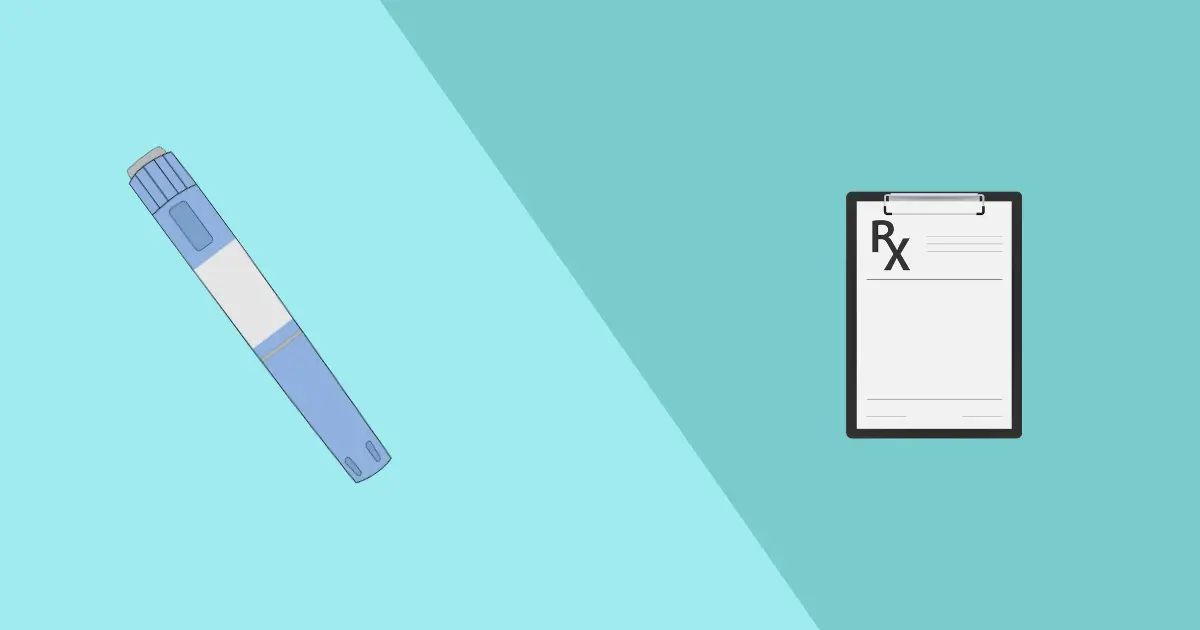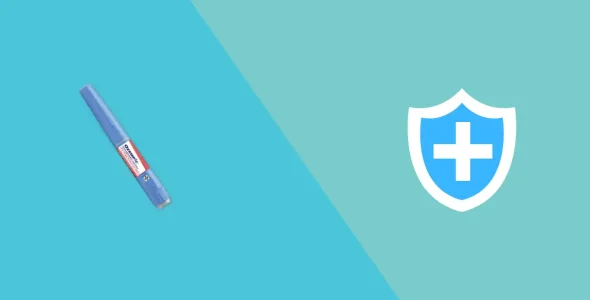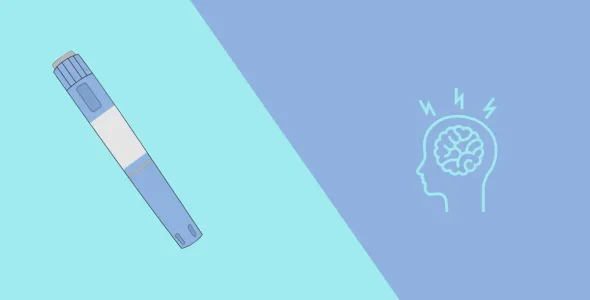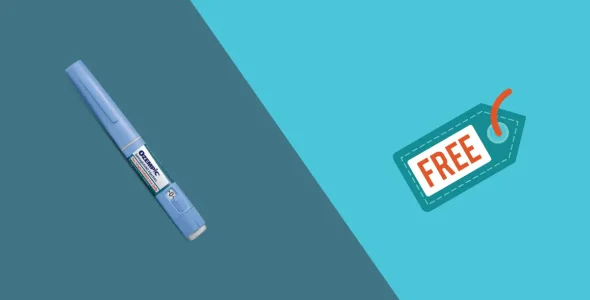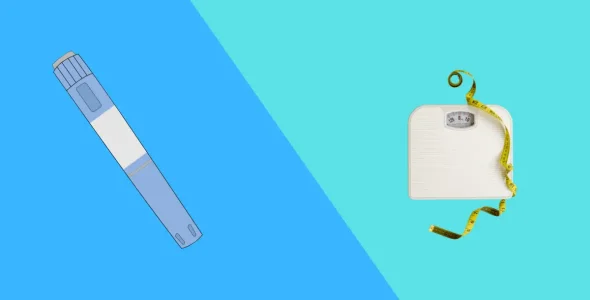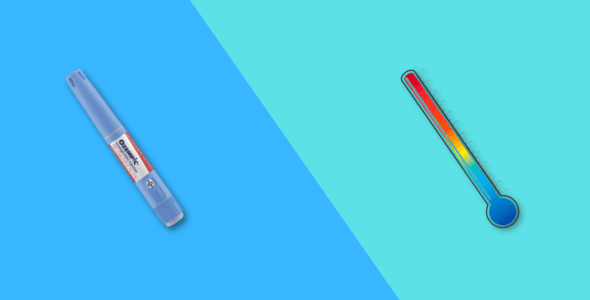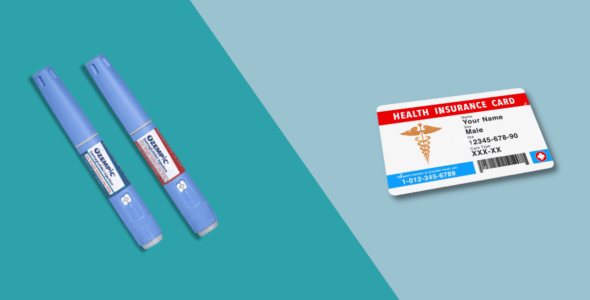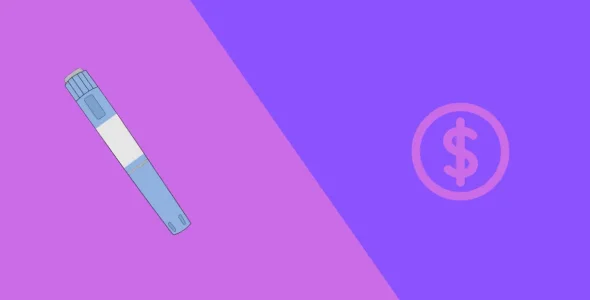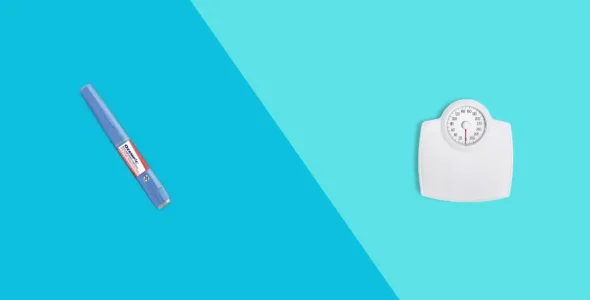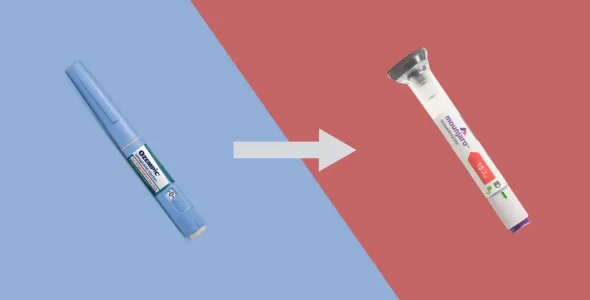Ozempic dosage chart: The complete guide
Ozempic dosage: From 0.25mg to 2mg, learn how each dosage increase impacts your health goals and when dose adjustments are typically made.
Key highlights
- Ozempic is started at a low dose of 0.25 mg once weekly. Afterwards, the dosage is increased every 4 weeks depending on your body's response and tolerance.
- The maintenance dose of Ozempic can be 0.5 mg, 1 mg, or 2 mg once weekly. 2 mg is the maximum dosage.
- If you experience severe or intolerable side effects with Ozempic, your prescriber will decrease the dosage or delay dose escalation for the next 4 weeks.
- Keep track of your blood glucose levels, weight changes, and any side effects, and inform your healthcare provider about them during follow-up sessions. They will adjust your dosage accordingly.
- Never try to adjust the dosage on your own. Always consult a licensed healthcare professional for dose adjustments.
Ozempic belongs to a class of GLP-1 receptor agonist medications. The medication contains semaglutide as its active ingredient, which mimics the action of the naturally occurring human glucagon-like peptide-1 hormone to suppress appetite and enhance insulin release. Ozempic is administered once weekly and is approved by the FDA (U.S. Food and Drug Administration) for managing type 2 diabetes mellitus, reducing the risk of cardiovascular diseases such as heart attack, stroke, hypertension, myocardial infarction, and death and lowering the risk of kidney failure or worsening kidney disease in patients with chronic kidney disease. The medication is also used off-label for chronic weight management.
With the increasing popularity of Ozempic, its demand has increased exponentially. However, when taking Ozempic, it is important to follow a correct dosing schedule as prescribed by your doctor for optimal blood sugar control, weight management, and safety.
This article provides a comprehensive and easy-to-understand guide to Ozempic dosage, covering the starting dose, titration schedule, maintenance doses for both type 2 diabetes and weight loss, administration, and crucial considerations.
Understanding Ozempic dosage for type 2 diabetes
When used in combination with a balanced diet and exercise, Ozempic is FDA-approved for type 2 diabetes patients to promote blood sugar control, reduce the risk of heart and blood vessel diseases and cardiovascular events such as stroke, myocardial infarction, and death, and to lower the risk of worsening kidney disease or kidney failure in patients with chronic kidney disease.
The medication is not approved for weight management. However, patients experience significant weight loss due to the glucose-lowering effect of Ozempic and appetite suppression. This is why healthcare professionals prescribe Ozempic as an off-label medication for chronic weight management.
When using Ozempic, follow the dosing schedule provided by your doctor to minimize the risk of side effects. Your doctor will prescribe the medication at a low dose and increase it gradually according to your body’s tolerance.
Starting dose (Weeks 1-4)
The starting dosage for Ozempic is 0.25 mg once weekly, which is administered subcutaneously (under the skin). The medication is started at a low dose to help your body adjust to the medication and minimize potential gastrointestinal side effects such as nausea, vomiting, diarrhea, bloating, burping, abdominal pain, and constipation.
Dose titration (gradually increasing the dose for blood sugar control)
Ozempic dosage is typically escalated every 4 weeks, while your doctor monitors your current condition. They will increase the dosage if your body can tolerate the side effects of the medication.
The titration schedule of Ozempic is as follows:
-
Weeks 5-8: 0.5 mg once weekly.
-
Weeks 9-12 (if needed): 1 mg once weekly, if further glycemic control is required.
-
Week 13 onwards (if needed): 2 mg once weekly, if your body can tolerate the previous dosage and further glycemic control is required.
This gradual increase allows for individualized treatment based on blood sugar response and tolerability. If your body does not tolerate a higher dose, dose escalation is delayed for the next 4 weeks. After 4 weeks, your healthcare provider assesses your condition again and decides whether to escalate the dose. However, it is not recommended to increase the dose more frequently than every 4 weeks. Do not try to adjust the dosage without seeking medical advice from a licensed healthcare provider.
Once weekly dosing schedule of Ozempic is as follows:
| Category | Type 2 Diabetes | Weight Loss (Off-Label) |
|---|---|---|
| Starting Dose | 0.25 mg once weekly (Weeks 1–4) | 0.25 mg once weekly (Weeks 1–4) |
| Titration Schedule | Weeks 5-8: 0.5 mg once weekly. Weeks 9-12 (if needed): 1 mg once weekly, if further glycemic control is required. Week 13 onwards (if needed): 2 mg once weekly, if your body can tolerate the previous dosage and further glycemic control is required. | Same as diabetes; Weeks 5-8: 0.5 mg once weekly. Weeks 9-12 (if needed): 1 mg once weekly. Week 13 onwards (if needed): 2 mg once weekly, if your body can tolerate the previous dosage. |
| Maintenance Dose | Usually 0.5 mg–1 mg weekly if A1C is controlled. Some may need 2 mg weekly. | Often 1 mg–2 mg weekly based on response and doctor's advice |
| Maximum Dose | 2 mg weekly (FDA-approved maximum) | 2 mg weekly (off-label, at doctor’s recommendation) |
| Missed Dose | Within 5 days: Take missed dose ASAP, resume schedule. After 5 days: Skip dose. Never double dose. | Within 5 days: Take missed dose ASAP, resume schedule. After 5 days: Skip dose. Never double dose. |
Maintenance dose for type 2 diabetes
The maintenance dose of Ozempic injection typically ranges from 0.5 mg to 2 mg once weekly, depending on your blood sugar levels. Some patients achieve blood sugar control with 0.5 mg and 1 mg once weekly injections of Ozempic. Others may need a higher dose of 2 mg once weekly as a maintenance dose to achieve blood sugar control. Your doctor will determine the appropriate maintenance dose based on your blood sugar levels.
Maximum approved dose for type 2 diabetes
The maximum approved weekly dose of Ozempic for type 2 diabetes is 2 mg. You can not take more than 2 mg per week.
Ozempic dosage for weight loss (off-label)
Ozempic is not FDA-approved for weight loss. Healthcare professionals use the medication off-label for weight management. When using it off-label, your healthcare provider will determine the right dosage. Generally, it follows the same titration schedule as for type 2 diabetes.
The higher doses of semaglutide are approved under the brand name Wegovy, which is specifically approved for chronic weight management in obese and overweight patients with at least one weight-related medical condition, such as high blood pressure, heart disease, high cholesterol levels, and obstructive sleep apnea (OSA). It has a different titration schedule. The maximum maintenance dose of Wegovy is 2.4 mg weekly. However, when taking Ozempic for weight management, you cannot take more than 2 mg weekly.
Research studies suggest that Wegovy has a greater efficacy than Ozempic in promoting weight loss. A cohort study involved 77 patients who received higher doses of semaglutide (1.7 mg and 2.4 mg, the maximum dose of Wegovy), and 98 patients in another group who received 0.25 mg, 0.5 mg, and 1 mg (typical doses of Ozempic). Participants who received higher doses of semaglutide lost 6.9% of body weight. In contrast, patients who received lower doses lost 5.1% of body weight after 3 months.
An average weight loss was 12.1% and 9.2% of initial body weight with higher and lower doses, respectively, after 6 months. This study suggests that Wegovy is more suitable for weight management due to its higher dosage compared to the lower doses of Ozempic.
Ozempic dosage for weight loss vs. diabetes
Type 2 diabetes patients
Type 2 diabetes patients typically need 0.5 mg or 1 mg once weekly if A1C is controlled. However, if further glycemic control is required, healthcare providers escalate the dosage to 2 mg, which is the maximum dosage.
Weight loss patients
When Ozempic is used off-label for weight management, patients usually need 1 mg or 2 mg once weekly. Wegovy is more suitable than Ozempic if higher doses are required for weight management, as the medication is approved by the FDA for this purpose.
Here is a comparison of different Ozempic doses and average weight loss according to different clinical trial studies:
| Ozempic dosage | Mean weight loss | Duration |
|---|---|---|
| 0.5 mg | 6.1 kg | 12 months |
| 1 mg | 6 Kg | 40 weeks |
| 2 mg | 6-9 kg | 40 weeks |
| 2.4 mg (Wegovy dosage) | 14.90% | 68 weeks |
How to inject Ozempic
Here is a detailed guide to the Ozempic pen and how to inject it:
The Ozempic pen
Ozempic comes in the form of prefilled pens. These are multi-dose injection pens, which are used once weekly. Different pens are available depending on the prescribed dose. These include the following doses:
-
0.25 mg pen
-
0.5 mg pen
-
1 mg pen
-
2 mg pen
Each pen delivers a fixed dose of Ozempic and is color-coded for easy identification. Your healthcare provider will determine the appropriate dose and instruct you on which pen to use.
Preparing the pen
Before using your Ozempic pen, always check the label to ensure it has the same dose as prescribed by your healthcare professional. If you are using a new pen for the first time, it must be primed. Priming ensures the pen is ready for accurate dosing by removing air from the needle. To prime the pen, follow the manufacturer’s instructions using a new needle.
Attaching the needle
Each injection requires a new needle. Use a NovoFine or NovoTwist disposable needle. Remove the protective seal. Screw the needle onto the pen firmly until it is secure. Remove both the outer and inner caps from the needle before use.
Selecting the injection site
Ozempic is injected subcutaneously, which means you have to inject it under the skin rather than into a muscle or vein. You can inject Ozempic in the abdomen, the front of the thigh, or the upper arm. However, it is important to change the injection site with each dose to reduce the risk of skin infections or irritation at the site.
Step-by-step guide: How to inject Ozempic
-
Wash your hands thoroughly with soap and water to reduce the risk of infections.
-
Check the pen label to confirm you are using the correct dose.
-
Attach a new needle:
-
Use a NovoFine or NovoTwist needle.
-
Screw it on securely, then remove both the outer and inner caps.
-
-
Prime the pen if it’s the first time using it.
-
Follow the manufacturer’s instructions to remove air bubbles and ensure accurate dosing.
-
Choose an injection site:
-
Choose any area from the abdomen, front of the thigh, or upper arm.
-
Do not inject into the same spot each week.
-
-
Clean the injection site with an alcohol swab to prevent skin infections..
-
Pinch the skin gently at the site to lift the fatty tissue.
-
Insert the needle at a 90-degree angle under the skin.
-
Deliver the dose:
-
Turn the dose selector to your prescribed amount.
-
Press and hold the dose button until the dose counter shows “0” and the “D” appears.
-
-
Hold the needle in place for 6 seconds after the counter reaches “0” to ensure the full dose is delivered.
-
Withdraw the needle carefully and dispose of it immediately in a sharps container.
-
Recap the pen and store it according to the instructions.
Additional tips
-
Change the injection sites each week to prevent skin infections, irritation, or lumps.
-
Keep refrigerated pens at room temperature for 30 minutes before injecting to avoid discomfort.
-
Never reuse needles. Always use a new one for every injection.
-
Do not share your pen with anyone, even if the needle is changed. Sharing can spread infections.
-
Dispose of needles properly in a puncture-resistant sharps container.
-
Do not inject into veins or muscles. Ozempic is for subcutaneous use only.
-
Do not inject into areas with bruises, scars, or skin that is hard, tender, or swollen.
-
You can also read detailed instructions on “How to Use Ozempic pen” on the Novo Nordisk official site.
What to do if you miss a dose
Whether you can take a missed dosage or not depends on the number of days that have passed since the previously scheduled date.
-
If you miss a dose and it is within 5 days of when it was due: Inject the missed dose as soon as you remember, within 5 days of the previously scheduled date. Then, take your next dose on your regularly scheduled day. For example, your scheduled day was Monday, and you missed the dosage. You can take this dose til Friday, but not after that.
-
If you miss a dose and it is more than 5 days past when it was due: Skip the missed dose. Inject the next dosage on your regularly scheduled date.
-
If you have missed 2 or more doses of Ozempic, consult your healthcare professional. They will adjust your dosing schedule again. They may lower the dosage of Ozempic and titrate the dosage again to avoid unwanted side effects.
-
Important: Do not take an extra dose to make up for a missed one. Never take a double dose as it can lead to severe nausea and hypoglycemia (low blood sugar levels), which usually requires hospitalization.
How to adjust your dose
Follow these instructions when adjusting your dose:
-
Never try to adjust your dosage on your own without consulting your healthcare provider.
-
The titration schedule of Ozempic is carefully designed for gradual adjustment based on your blood sugar control (for type 2 diabetes) or weight changes if you are using it off-label.
-
Your healthcare provider may consider delaying dose escalation or temporarily reducing the dose if you experience severe and intolerable side effects. Mild side effects usually subside over time. If they persist, your doctor may lower the dosage of the medication and delay dose escalation.
-
Track your progress and side effects you experience while taking Ozempic. Inform your healthcare provider if you have any tolerability issues.
-
Note down your blood sugar readings daily and show them to your doctor, so they can plan your treatment accordingly.
Signs to increase the dosage
-
If your glycated hemoglobin (HbA1C) levels are greater than 7 after 4 or more weeks at the current dose, your prescriber will increase the dosage. A1C levels greater than 7 indicate uncontrolled diabetes, which means a higher dose is required to promote blood sugar control.
-
If you are using it off-label for weight loss and you have hit a weight loss plateau, it is an indication to increase the dosage.
Signs to pause or lower the dosage
-
If you experience severe nausea, vomiting, diarrhea or any other intolerable side effects, your healthcare provider will lower the dosage of Ozempic.
-
Some people may experience hypoglycemia (low blood sugar levels) with Ozempic. It is an indication to lower the dosage. Although hypoglycemia is uncommon with Ozempic, it can be fatal. Hypoglycemia can lead to coma, which requires emergency medical care to prevent brain damage and death.
Never self-adjust the dosage of any medication, including Ozempic. Always consult your healthcare professional for dose adjustments.
Side effects of Ozempic
The common side effects of Ozempic are:
-
Nausea
-
Vomiting
-
Diarrhea
-
Constpation
-
Abdominal discomfort
Serious side effects include the following:
-
Excessive burping
-
Changes in vision (diabetic retinopathy may worsen)
-
Acute kidney injury (due to dehydration)
-
Gallbladder problems
-
Severe gastrointestinal problems
-
Stomach ache or gastritis
-
Hypoglycemia (low blood sugar levels)
-
Pancreatitis (inflammation of the pancreas)
-
Allergic reactions or hypersensitivity reactions
-
Increased risk of aspiration during sedation or anesthesia
Ozempic has a boxed warning for patients with a history of thyroid tumors such as medullary thyroid carcinoma (MTC). It is also contraindicated for patients with MEN 2 syndrome (multiple endocrine neoplasia syndrome type 2). Moreover, Ozempic is not suitable for children and pregnant and lactating women.
If you experience an allergic reaction or hypoglycemia while taking Ozempic, immediately visit a nearby healthcare facility for emergency care. Moreover, if you experience severe side effects, do not take the next dosage of Ozempic before consulting your doctor.
Important considerations when using Ozempic
-
Use only as prescribed: Ozempic is a prescription drug and should only be used when prescribed by a licensed healthcare professional. You cannot start the medication on your own. You will need to visit your healthcare provider, who will assess your current health condition, previous medical records, and vital stats. They may recommend a few laboratory investigations, such as blood sugar levels and glycated hemoglobin (HbA1c) levels, before prescribing the medication. After a detailed assessment, they will create a personalized dosing schedule for you according to your body needs.
-
Not interchangeable with Wegovy: Although Ozempic contains the same active ingredient (semaglutide) as Wegovy, the medication is not interchangeable with Wegovy. Ozempic and Wegovy have different dosages and are approved for different primary uses. Do not switch between them without explicit instructions from your healthcare professional.
-
Combination with other diabetes and weight loss medications: Inform your healthcare professional if you are using any other medications for diabetes, such as insulin and sulfonylureas or any weight loss medications. Your doctor will determine if Ozempic should be used alone or with other medications. Follow their instructions carefully regarding the dosage and timing of all your medications.
-
Long-term use: Ozempic is intended for promoting blood sugar control in patients with type 2 diabetes and/or weight loss (if used off-label) in obese and overweight patients. However, you can get desired results when you use the medication for a long time as directed by your doctor, in conjunction with lifestyle modifications. Keep in mind, Ozempic will not control blood sugar levels or shed extra weight overnight. You may start to notice changes in appetite after 1-4 weeks, and the weight loss starts after 4 weeks. However, these changes become more significant over time as the dosage is increased.
-
Travel: If you are planning to travel, make sure that you take enough medication with you and store it properly. Do not stop taking the medication while traveling, as missing doses affect the impact of Ozempic on blood sugar levels and body weight, and you may not get the desired results.
-
Switching injection times: If you want to change your usual weekly injection day, discuss this with your doctor first. They will guide you on how to safely switch injection times and days. Generally, there should be a gap of 48 hours (2 days) between the two doses of Ozempic. For example, you normally administer Ozempic on every Sunday, you can take it again on Tuesday or any day after that. It is better to discuss this with your healthcare provider to avoid the risk of adverse effects.
Ozempic cost and insurance coverage
The list price or wholesale acquisition price of Ozempic is $997.58 for a 28-day supply. The price is the same for all doses. You may be able to obtain Ozempic for $1,000 to $1,300 or more from local pharmacies. However, several saving options, such as insurance coverage, Novo Nordisk’s Ozempic saving card, and pharmacy discount cards, can lower the price of the medication.
The retail prices of Ozempic at different pharmacies are the following (according to GoodRx)
| Pharmacy | Retail Price |
|---|---|
| Walgreens | $995.00 |
| Walmart | $995.00 |
| CVS Pharmacy | $995.00 |
| Costco | $964.99 |
Note: The prices mentioned are based on the current date of publication and may be subject to change. Please verify with your provider or pharmacy for the most up-to-date pricing information.
Insurance coverage
Most insurance companies cover Ozempic for type 2 diabetes. However, insurance coverage may vary depending on your insurance plan, yearly deductibles, and preferred drugs in your insurance plan.
Medicaid coverage for Ozempic may vary between different states. Contact your state’s Medicaid formulary to confirm whether Ozempic is included in the preferred drug list.
Medicare may cover Ozempic for the management of type 2 diabetes, but it does not cover it when used for weight loss as an off-label medication.
Private insurance companies such as Blue Cross Blue Shield, Aetna, and United Healthcare may or may not cover Ozempic for its FDA-approved uses, depending on your Insurance plan. If they do, you will need a valid prescription or prior authorization from a licensed healthcare professional for insurance coverage of Ozempic.
Savings tips
Ozempic Savings Card
Novo Nordisk provides an Ozempic savings card for individuals with commercial or private insurance that covers Ozempic. With this card, you can receive a 1-month, 2-month, or 3-month supply of Ozempic for as little as $25. The savings card is valid for up to 48 months. To take advantage of this offer, you must have a valid prescription from a licensed healthcare provider. There are specific eligibility requirements for this program, including:
-
You must be a U.S. resident.
-
You must be over 18 years old.
-
You must be using Ozempic for its FDA-approved purposes (type 2 diabetes, cardiovascular risk reduction, or to lower the risk of kidney failure.
-
You should have a valid prescription for Ozempic from a licensed healthcare provider.
-
You must have commercial drug insurance coverage for Ozempic.
-
You should not be enrolled in any government or state-funded programs, such as VA, DOD, Medigap, Medicare, Medicaid, TRICARE, or similar programs.
Pharmacy coupon cards
A few online pharmacies offer coupon cards that provide savings of up to 9% to 27% of the total cost. You can visit the official sites of the following pharmacies to get these cards:
-
GoodRx
-
WellRx
-
BuzzRx
-
Single care
-
Optum Perks
Here are a few practical tips to save on Ozempic:
-
Check your eligibility for Novo Nordisk’s Ozempic Savings card program if you have private or commercial insurance.
-
If you are enrolled in Medicaid or Medicare, contact them to confirm insurance coverage of Ozempic.
-
If you’re uninsured, consider using pharmacy coupon cards. Compare the prices of Ozempic at different pharmacies and choose the most affordable and reliable one.
-
If you can’t afford Ozempic, consult your healthcare provider to explore alternatives such as tirzepatide, liraglutide, or compounded semaglutide.
Ozempic dosage FAQs
Can I start Ozempic at 0.5 mg?
No, you cannot start Ozempic directly at 0.5 mg. The starting dose of Ozempic is 0.25 mg, which is administered once weekly. The medication is started at a low dose to avoid the risk of potential side effects.
How long does 1 mg dose of Ozempic stay in your system?
Ozempic 1 mg takes approximately 5 weeks to fully clear from your body. The half-life of Ozempic is 7 days. This means your body needs 7 days to remove half of the medication. Ozempic is eliminated from the body after five half-lives, which takes 5 weeks.
Can I split Ozempic pens to save money?
No, you cannot split Ozempic pens to save money. They are single-dose pens.
What’s the best time to take Ozempic?
You can take Ozempic at any time of the day, either in the morning or at night. Consistency matters more than the timing. However, if you take the medication at night before going to bed, it may help with nausea.
Conclusion
Ozempic is a prescription medication for promoting blood sugar control in type 2 diabetes and weight management (off-label). The medication has a titration schedule for optimal blood sugar control and/or weight management. You should follow the dosage schedule of Ozempic as prescribed by your healthcare provider to get the desired results of the medication and avoid any side effects.
Ozempic is started at a low dose of 0.25 mg once weekly, and the dose is escalated every 4 weeks, based on blood sugar levels and the body’s tolerance. The maximum dosage of Ozempic is 2 mg once weekly.
While on Ozempic treatment, keep tracking your blood sugar levels, weight changes, and side effects (if you experience any). Discuss them with your healthcare provider on your next follow-up. Ozempic treatment needs continuous care, monitoring, and communication with your healthcare provider, who will adjust your dosage according to your body’s response and tolerance.
Feel free to ask questions to your doctor during follow-up sessions. Be actively involved in your treatment plan to get the best results.
